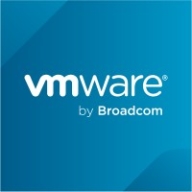



Find out what your peers are saying about Fortinet, Cisco, Cato Networks and others in Software Defined WAN (SD-WAN) Solutions.
Clients are now comfortable and not wasting productive hours on IT support.
The automation part is giving us a cost benefit and speed; we can react faster.
It's a very useful tool to mitigate and protect your enterprise.
They are now back to do that with the remainder of their company, so they've realized the value in 12 months and are willing to invest in the remainder of their organization.
The deployment time with VMware VeloCloud SD-WAN saves 50 percent compared to traditional MPLS networks.
They offer very accurate solutions.
The quick resolution of issues with Fortinet FortiGate is due to the support of the company and the fact that the equipment is easy to work with.
I would rate the technical support for Fortinet FortiGate a ten out of ten.
The principal third-level support is very good.
I would consider Cisco support a 10 out of 10.
I would rate Cisco's support, their customer service, and technical support as excellent.
I work with a partner, not directly with the OEM, which makes getting technical support on call very challenging.
I appreciate having dedicated service engineers who manage our account and ensure any technical issues are addressed efficiently.
They scale up really well from smaller models like the FortiGate 40 and 50 to bigger sites with the FortiGate 100 for more throughput - up to enterprise datacenters.
The variation comes in terms of the interfaces and throughputs, but from a security perspective, you get the same benefit, irrespective of whether you have an entry-level unit or an enterprise.
We determine sizing based on multiple factors: number of users, available links, traffic types, server count, services in use, and whether services will be published.
Cisco SD-WAN is highly scalable and can be expanded to more than 10,000 sites.
The ease of configuration and features like zero-touch provisioning enhance the scalability of Cisco SD-WAN, especially in disaster recovery situations.
The scalability from a performance point of view is good, but from a commercial perspective, it is low.
The customer base for VMware VeloCloud SD-WAN has been growing 30 to 40 percent per year when transitioning from traditional MPLS networks.
We're experiencing 99.999% availability consistently.
I would rate the stability of Fortinet FortiGate a ten out of ten.
Currently, we are experiencing a general outage of one of the main internet service providers of the Dominican Republic, and we have not been impacted in our operations because with SD-WAN, we have another internet service provider and we are working with the second WAN connection without any disruption.
While some software-related issues and bugs were encountered, they did not cause the whole environment to crash.
The technical team from VMware VeloCloud SD-WAN addresses these issues promptly, making us very happy with their support.
Overall, VMware VeloCloud SD-WAN is a stable solution.
Investing in a solution that can accommodate such growth would be more cost-effective than repeatedly purchasing new hardware.
While Fortinet claims to offer a comprehensive network solution, it falls short in addressing computer application issues, particularly server security.
When considering Sophos XG, which we also use, the logging and reporting functionality is notably more efficient.
Now, they change frequently, making it difficult to obtain long-term support.
Including more features like integrating with Splunk for monitoring vulnerabilities would help eliminate the need for other SOC solutions.
The negative, or the downside of Cisco is the knowledge base; you need to be a little bit more tech-savvy and network-savvy to work with Cisco, while Juniper is a lot more user-friendly from what I can see, especially in terms of configuration and any kind of roll back.
There should be more technical materials and certifications available to improve awareness and skills in the industry.
I would like to see improved security features, such as adding more SASE functions.
Unlike the comprehensive reports we receive from Palo Alto for our firewalls, VMware VeloCloud SD-WAN doesn't offer detailed reports that effectively convey the solution's benefits to management.
Last year, I renewed the support for three years, which can sometimes be expensive but depends on the security benefits and how it helps us.
It offers cost savings as it is generally cheaper than the competition.
It is about 20% cheaper.
Its pricing is justifiable due to the comprehensive solution it offers.
It is also relatively cost-effective for smaller businesses when using the Meraki version.
The pricing of Cisco Catalyst SD-WAN is rated between eight and nine out of ten, where ten is the most expensive.
The solution is very expensive, costing above one crore Indian rupees for our setup, which spans around twenty five branches.
The pricing is high, making the margin thin, which limits mark-up opportunities from the wholesale price.
The pricing involves licensing for the VeloCloud gateway based on the bandwidth used.
In terms of security, we have not experienced any security flaws or loopholes, and it has proven to be quite stable.
FortiGate has helped reduce the risk of cyberattacks that might disrupt our client's production.
These features help reduce our downtime, manage the ISPs, and deploy SLAs for all the website traffic.
It also provides robust security features, including port security, analysis, mirroring, and multiple other security solutions.
Cisco Catalyst SD-WAN has integrated security features which include base firewall, URL filtering, IPS, and secure segmentation.
Integration capabilities provide comprehensive security.
The most valuable features of Versa Unified Secure Access Service Edge (SASE) are application prioritization, advanced routing features, and network gateway firewall capabilities.
Its proprietary Dynamic Multipath Optimization (DMP) technology is regarded as the most powerful and valuable function by VMware VeloCloud SD-WAN.
Previously, organizations used MPLS links for 1 MB at around $200, but now they can use 4G or 5G SIM cards for half that price while achieving more bandwidth.
VMware VeloCloud SD-WAN has truly transformed our environment, providing significantly more bandwidth at lower costs, which is essential for tasks like Teams calls.
| Product | Market Share (%) |
|---|---|
| Fortinet FortiGate | 18.7% |
| Cisco Catalyst SD-WAN | 14.8% |
| VMware VeloCloud SD-WAN | 9.8% |
| Versa Unified Secure Access Service Edge (SASE) Platform | 4.2% |
| Other | 52.5% |




| Company Size | Count |
|---|---|
| Small Business | 350 |
| Midsize Enterprise | 129 |
| Large Enterprise | 187 |
| Company Size | Count |
|---|---|
| Small Business | 44 |
| Midsize Enterprise | 15 |
| Large Enterprise | 42 |
| Company Size | Count |
|---|---|
| Small Business | 9 |
| Midsize Enterprise | 4 |
| Large Enterprise | 8 |
| Company Size | Count |
|---|---|
| Small Business | 22 |
| Midsize Enterprise | 14 |
| Large Enterprise | 20 |
Fortinet FortiGate excels in providing integrated VPN, firewalling, and Unified Threat Management (UTM) with centralized management and high availability. It supports remote access and comprehensive threat protection, making it a preferred choice for securing networks.
Fortinet FortiGate offers a robust security platform with features such as strong intrusion prevention, application control, and web filtering. Its integration with Active Directory and SD-WAN functionality provides scalable solutions for large networks. Users appreciate its ease of use through centralized management interfaces, ensuring robust security with flexible configurations. However, FortiGate could enhance its graphical interface and technical support responsiveness, address firmware bugs and costly licensing, improve logging, integrate better with third-party tools, and strengthen scalability and memory for log storage. Complexity in configuration and the need for intuitive features are noted challenges, and there's a demand for advanced security, zero-trust capabilities, and AI integration.
What are the key features of Fortinet FortiGate?Fortinet FortiGate is widely implemented across industries like education, finance, and government. Companies use it for firewall protection, VPN, and SD-WAN capabilities, ensuring secure perimeter and data center security. It facilitates remote access management and traffic routing optimization, offering reliable security and connectivity solutions.
Cisco Catalyst SD-WAN offers centralized management and integrates seamlessly with existing Cisco ecosystems. It simplifies deployment with zero-touch provisioning, delivering robust security and optimized application routing.
Cisco Catalyst SD-WAN provides essential capabilities for organizations seeking secure remote connectivity and cost reduction, notably through its support of hybrid environments. While pricing and complexity present challenges, its advanced application control and cloud compatibility make it a valuable asset for connecting branches and data centers. Users benefit from enhanced security, network assurance, and simplified management, driving operational efficiency.
What are the key features of Cisco Catalyst SD-WAN?In banking, retail, and enterprise sectors, Cisco Catalyst SD-WAN facilitates effective network management by enhancing connectivity between branches and data centers. Its security features and zero-touch deployment are particularly valued, providing scalable solutions for locations that demand reliable, application-prioritized networking.
The Versa Unified Secure Access Service Edge (SASE) Platform is a comprehensive solution that provides secure access to cloud applications and services. It combines networking and security functions into a single platform, making it easier for organizations to manage their network infrastructure. The platform includes features such as SD-WAN, VPN, firewall, web filtering, and more. It also offers advanced security capabilities such as intrusion prevention, malware protection, and threat intelligence. With the Versa SASE Platform, organizations can ensure secure access to their cloud applications and services from any location, while also reducing costs and simplifying network management.
VMware Software-Defined Wide Area Network (SD-WAN) is a secure access service edge (SASE) platform that combines many types of software-based network technologies in an attempt to enable users to virtualize their wide area networks and reduce their reliance on hardware. In essence, this solution makes it possible for users to reliably access their applications from anywhere in the world by leveraging cloud technologies. Users can simply, efficiently, and completely control their network devices and traffic. It ensures that organizations are always able to use the best possible connection to their data centers. VMware SD-WAN steers traffic so that it is always using the most reliable connections and at the same time takes steps to remediate any problems that it detects in other network links. This guarantees that organizations can access high-priority applications at all times.
VMware SD-WAN Benefits
Some of the ways that organizations can benefit by deploying VMware SD-WAN include:
VMware SD-WAN Features
Reviews from Real Users
VMware SD-WAN is a solution that stands out when compared to many of its competitors. Two major advantages it offers are its ability to automate the process of creating and maintaining a virtual local area network and its intuitive user dashboard.
Sami I., principal cloud architect at Loihe, writes, “One of the solution's most valuable features is the VMware core automation stack at an SDDC. It includes NSX, the VMware virtualization layer for the networks (the LAN virtualization), which works extremely well with the VMware SD-WAN solution and is the primary advantage over all the others. None of the other vendors could integrate with the virtual LAN, making it quite complicated and virtualized to be fully automated.”
Chih S., senior technical consultant at a tech services company, says, “The product has a very good user dashboard that is simple to navigate.”